I’m being pushed by more than one person to do more posts with cooking tips, or even a cookbook. One person suggested a regular weekend feature with a recipe and prep photos.
Dunno about all of that… but here is a little item you might like.
How to fancy up a wine bottle on the cheap.
I bet you usually just cork your bottle and put it on the table.
Sometimes people fuss over the cork, sniffing it and all that. I don’t think you really learn much from the cork, after you have checked to make sure that it is in good shape, and not soggy from the wine or compromised in such a way that your wine will be "corked".
Still, there is something to the ritual of opening the bottle and fussing with the cork.
Unless you have one of those bottles with a twist cap… which aren’t all that bad, frankly… and you have a bottle with a good cork, after the rigmarole with the cork you might want to fancy up your bottle’s presence a little. It takes but a moment and it makes your presentation a little more interesting.
Let’s have a look.
1) Cut around the cap, as usual. But…. don’t cut all the way around. Leave about 1/2 inch uncut.
I don’t like these cutters with a serrated edge… but it was the closest to hand.
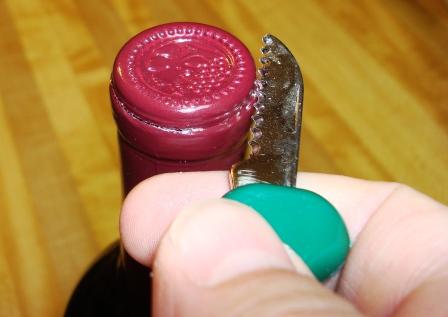
2) Do the same a little farther down the cap, again leaving the corresponding part uncut.
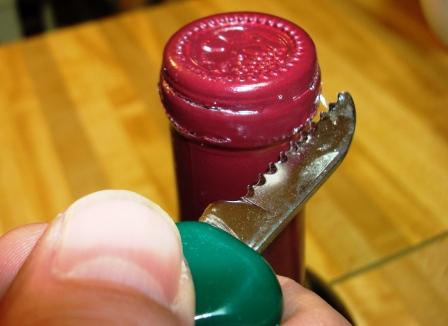
3) You should now be able to lift up the top of the cap.
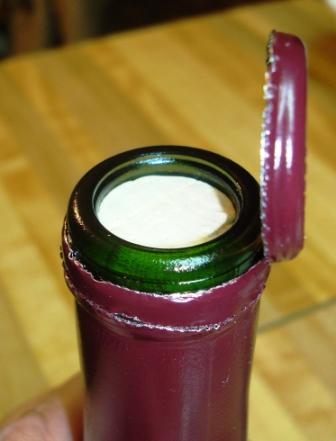
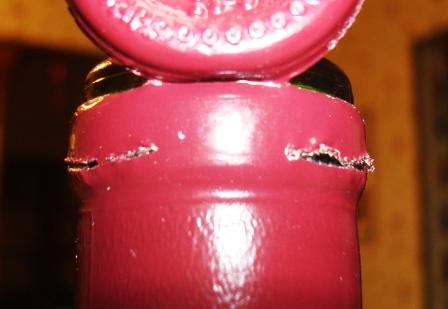
4) You can then also lift up the lower "ring" you cut.
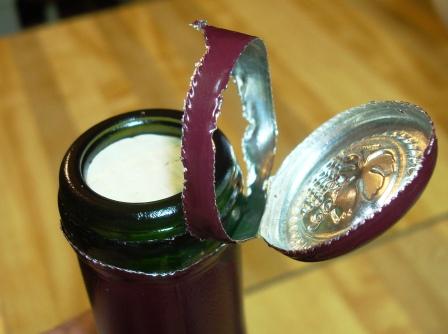
5) Bend the structure down so that it looks like this.
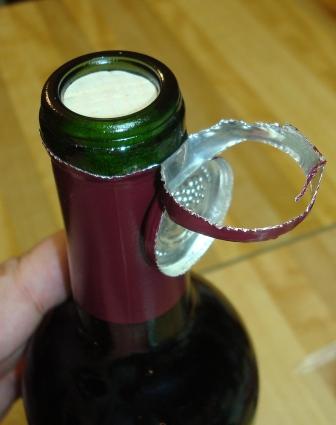
6) Open your bottle, being careful not to tear the structure you made.
I prefer lever corkscrew. I have a really spiffy huge corkscrew made by Campagnollo which I’ll show you sometime.
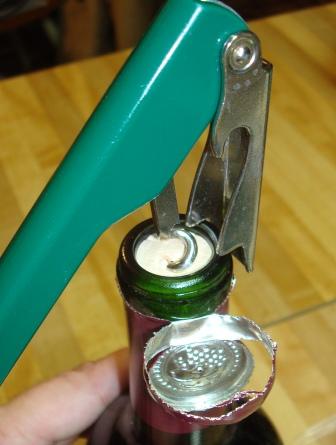
7) Slip the cork into the ring and crimp it down close to the bottle’s neck so that the ring grips the cork.
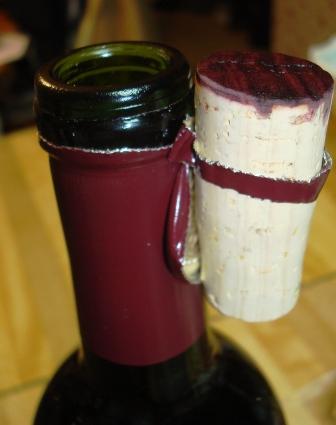
Just a little fun with corks and wine bottles.
I learned this in a little restaurant in Bayeux, Normandy.


































cute!
Love it!
Also love the idea of a food feature!
Awesome! I going to do that from now on.
Please, for us caifones, recommend a wine with each recipe.
¡Bravo!
Clever
Any suggestions about opening bottles with ‘corks’ made of manmade materials? I always have difficulty with these and end up with half of them in the bottle.
Fr. Z.,
Perhaps, if not a food article, perhaps some posts about the importance of feasting well.
For pulling corks, my favorite corkscrew is the Rabbit, or its copy… which can be had a Costco for 20 bucks. Fool proof and unbelievably easy. Though I spose no self-respecting European waiter would try to pull that thing out of his back pocket.
I’m going to have to try this Father. I like it. But i bet it will take some practice for the fumbled-fingered. Well. Fortunately I have a lot of bottles on which to practice! [hic!]
Anybody wanna come and help? :-)
Dear Fr.,
Please no “cute” wine tips please. What self respecting male wine drinker would ever consider such a thing? ;)
Sincerely,
Madame Cliquot
Madame Cliquot: The widowed state suits you!
Little Gal: I’ve never had an issue with them. In my experience bad natural corks are more likely to fail.
In any case make sure that you have a good, strong corkscrew, and that you drive it well down into the cork. That should ensure that you are distributing the stress evenly through the cork. An lastly, I’ve tried all the new-fangled corkscrews: screwpull, wing, CO2, and I always come back to the butler’s corkscrew like what Father Z is using. They can be had cheaply, and they work well.
It is useful to smell the cork (unless it is one of the new plastic stoppers, in which case the wine will always be OK), because it provides the best determinant of whether the wine is corked. In this sad eventuality, the wine may not actually taste foul, but it will always fall far below the quality of an uncorked bottle. The cork may have one of three smells:
a) alcoholic;
b) fruity;
c) old hymn-books.
If hymn-books, then the wine is corked and should be returned untouched to the vendor. The problem is caused by a fungal infection within the cork itself.
This advice was given to me by a commercial wine grower, and I have found it entirely reliable. Alas, it was particularly so during this Christmas period when I have had to pour three bottles of L de Lussac 2002 down the sink; two others from the same batch were OK. (I couldn’t return them to the vendor because they had been part of a gift!) The corks in this case were stoppers made from reconstituted cork.
The ultimate must be the hot-tongs and wet-feather approach. Red-hot tongs heat the glass in an annulus about a cm above the lower edge of the cork; then, a light, but elegant application of a wet feather cracks the glass cleanly. The cork still seals the contents (from any unfortunate glass slivers, brushed away discretely by the feather), but now one can easily remove it having access to most of the exposed part. This is apparently traditional with very old bottles of Port that have quite delicate corks.
I’d suggest practicing on some less expensive bottles in private before convincing that special lady you are really James Bond or Major John Steed.
I have a really spiffy huge corkscrew made by Campagnollo which I’ll show you sometime.
The bicycle parts manufacturer?
Good grief !
Father – that’s pretty cool. I’ll have to try that on my next bottle!
Thank you!
This very clever little trick isn’t in any of my wine books. Much appreciated!
Bravo!
“a)alcoholic
b)fruity
c)old hymn-books.”
regarding ‘c’ : Glory & Praise or Gather? Either one is cause for rejection…